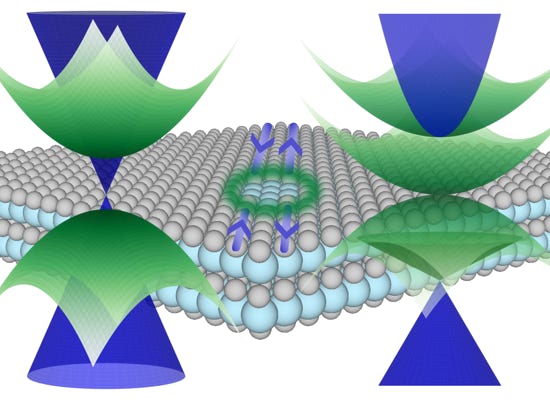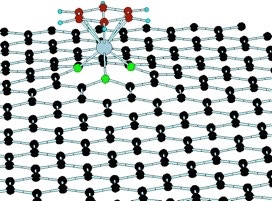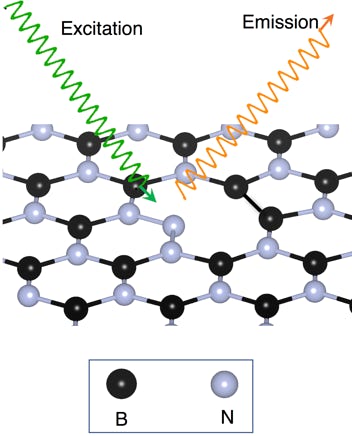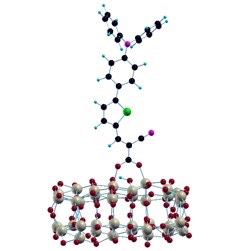Research
Science at the interface of Condensed Matter Physics and Quantum Chemistry
Engineering defects in solids
Defect engineering helps to create stable sandwich structures out of graphene, transition metals and benzene.
A precise understanding of defect-structures at the quantum mechanical level is critical for correlating material properties with the atomic-scale structures. We study structural, electronic, and optical properties of defects to investigate how their presence influences the behavior of materials and can be used to engineer desirable, non-native properties within them. For example, the presence of defects can: (i) improve reactivity of chemically-inert structures such as graphene, and (ii) can induce unconventional magnetism (called sp/d0-magnetism) in semiconductors that are otherwise not doped with magnetic ions. These engineered materials are immensely important in the fields of opto-electronics and spintronics, among others.
Spin qubits in semiconductors
In the past decade or so, a class of defects, called deep defect centers in semiconductors have emerged as one of the promising solid-state qubit candidates. Using group theoretic and DFT-based methods, we investigate different properties of deep defects in wide bandgap semiconductors. Our calculations determine the electronic structure, spin state and optical selection rules of these defects and determine their suitability for various quantum technologies (e.g., nanosensors, quantum memory registers, single photon emitters).
Organic crystals & other hybrid nanomaterials
We investigate different structures, such as organic molecule-semiconductor composites and organic crystals, for applications in the rapidly developing fields of organic electronics and organic photovoltaics. In particular, we are interested in the study of Dye Sensitized Solar Cells (DSSCs) that contain organic molecules adsorbed onto a semiconductor (titania nanoparticles). Using DFT and time-dependent DFT (TD-DFT), we reveal the possible mechanisms behind the key process of charge-transfer between the two sub-systems. The study of such structures is multiscale in nature, and depending on the constituents, it involves a confluence of ideas from chemistry and physics.
Organic molecule-titania nanoparticle hybrid structure for Dye-Sensitized Solar Cells (DSSC).
Research supported with grants from:


W. M. KECK FOUNDATION




